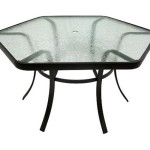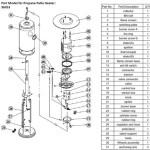Best Fly and Mosquito Repellent for Your Patio
Enjoying a patio space can significantly enhance the quality of outdoor living. However, the presence of flies and mosquitoes can quickly detract from this experience, turning a relaxing haven into an irritating gauntlet. Selecting the appropriate fly and mosquito repellent is crucial for reclaiming outdoor spaces and ensuring comfort. This article explores various options available for patio pest control, focusing on their effectiveness, safety, and application methods. The goal is to provide comprehensive information to facilitate informed decisions for creating a pest-free patio environment.
The market offers a wide array of solutions, ranging from chemical sprays and electronic devices to natural remedies and physical barriers. Each approach has its own set of advantages and disadvantages, and the optimal choice often depends on factors such as the size of the patio, the severity of the pest problem, and personal preferences regarding chemicals and environmental impact. A thorough understanding of these available options is essential for achieving effective and sustainable pest control.
Understanding Fly and Mosquito Behavior
Before implementing any repellent strategy, it is beneficial to understand the basic behaviors of flies and mosquitoes. Mosquitoes, for example, are attracted to carbon dioxide, body heat, perspiration, and certain body odors. They are most active during dawn and dusk, seeking stagnant water sources for breeding. Flies, on the other hand, are attracted to decaying organic matter, garbage, and food spills. They are diurnal insects, meaning they are most active during the day. Identifying and eliminating these attractants is often the first step in effective pest control.
Understanding the life cycle of these pests also provides valuable insights into prevention. For mosquitoes, eliminating standing water in bird baths, flower pots, and gutters can significantly reduce their breeding grounds. For flies, maintaining cleanliness by promptly cleaning up food spills and properly disposing of garbage can minimize their presence. By addressing the root causes of infestation, the reliance on repellents can be minimized.
Specific species of mosquitoes and flies may also exhibit different behaviors and sensitivities to various repellents. Researching the common species in a specific geographic region can further refine the selection of the most effective repellent. Local agricultural extension offices or pest control services can provide valuable information on prevalent species and recommended control methods.
Chemical Repellents: Options and Considerations
Chemical repellents are a common and often effective method for controlling flies and mosquitoes. These repellents typically contain active ingredients that interfere with the insect's ability to locate or land on a host. DEET (N,N-Diethyl-meta-toluamide) is one of the most widely used and researched ingredients. It works by interfering with the insect's receptors for carbon dioxide and other attractants, making it difficult for them to find a target.
Picaridin is another popular alternative to DEET. It is considered less irritating to the skin and has a milder odor. Like DEET, picaridin disrupts the insect's ability to locate a host. Both DEET and picaridin are available in various concentrations, and the appropriate concentration should be chosen based on the duration of exposure and the severity of the pest problem. Higher concentrations offer longer-lasting protection but may also increase the risk of skin irritation.
Permethrin is a synthetic insecticide that is often used to treat clothing and mosquito netting. It works by paralyzing and killing insects upon contact. Permethrin should not be applied directly to the skin. It is effective against a wide range of insects, including mosquitoes, ticks, and flies. Pre-treated clothing and netting are readily available, offering an easy way to incorporate permethrin into a pest control strategy.
When using chemical repellents, it is crucial to follow the manufacturer's instructions carefully. Avoid applying repellents to broken or irritated skin, and wash hands thoroughly after application. It is also important to consider the potential environmental impact of these chemicals. Excessive use or improper disposal can lead to contamination of water sources and harm to beneficial insects.
Natural and Alternative Repellents
For individuals seeking alternatives to chemical repellents, a variety of natural and herbal options are available. These repellents typically utilize essential oils derived from plants known for their insect-repelling properties. Citronella oil is one of the most well-known and widely used natural repellents. It is derived from citronella grass and emits a strong citrusy odor that masks the scents that attract mosquitoes.
Other essential oils that have demonstrated repellent properties include eucalyptus oil, lavender oil, peppermint oil, and tea tree oil. These oils can be applied topically (diluted in a carrier oil) or diffused into the air using essential oil diffusers. When applying essential oils to the skin, it is crucial to perform a patch test first to check for any allergic reactions. Diluting the oils in a carrier oil, such as coconut oil or jojoba oil, is also important to prevent skin irritation.
Plants can also be used as natural repellents. Planting certain herbs and flowers around the patio can help deter flies and mosquitoes. Lavender, rosemary, basil, and marigolds are known for their insect-repelling properties. These plants release volatile compounds that interfere with the insect's ability to locate a host or provide an inhospitable environment.
While natural repellents are generally considered safer than chemical options, their effectiveness may be shorter-lived and require more frequent application. They may also be less effective against certain species of mosquitoes and flies. It is important to research the specific properties of each repellent and to experiment with different combinations to find the most effective solution for a particular situation.
Electronic Repellents and Traps
Electronic repellents and traps offer another avenue for pest control in patio environments. Mosquito zappers are a common type of electronic trap that attracts insects with ultraviolet light and then electrocutes them. While mosquito zappers can be effective at killing some insects, they may not be as effective at controlling mosquitoes specifically. Studies have shown that mosquito zappers often attract and kill beneficial insects as well, leading to environmental concerns.
Ultrasonic devices are another type of electronic repellent that emits high-frequency sound waves purported to deter mosquitoes and flies. However, the effectiveness of ultrasonic devices has been widely debated, and many studies have found little to no evidence that they repel insects. The Federal Trade Commission (FTC) has even taken action against companies making unsubstantiated claims about the effectiveness of ultrasonic pest control devices.
Propane mosquito traps, also known as mosquito magnets, are more sophisticated devices that mimic human breath to attract and trap mosquitoes. These traps use propane to generate carbon dioxide, heat, and moisture, which are all attractants for mosquitoes. Once attracted to the trap, the mosquitoes are sucked into a net or container. Propane mosquito traps can be effective at reducing mosquito populations in a specific area, but they can also be expensive to operate and require regular maintenance.
When considering electronic repellents and traps, it is important to carefully evaluate the scientific evidence supporting their effectiveness. Look for devices that have been tested and proven to be effective against the specific pests that are causing problems. It is also important to consider the potential environmental impact of these devices. Ensure the device does not harm beneficial insects or other wildlife.
Creating a Pest-Free Patio Environment
Beyond the use of repellents, several other strategies can contribute to creating a pest-free patio environment. Implementing these strategies in conjunction with repellents can provide a comprehensive approach to pest control.
Proper landscaping and yard maintenance can significantly reduce the presence of flies and mosquitoes. Trimming bushes and trees can eliminate harborage areas for these pests. Clearing away leaf litter and debris can also reduce breeding grounds and hiding places. Ensuring that the lawn is regularly mowed and that weeds are controlled can further minimize pest populations.
Installing screens on windows and doors can prevent flies and mosquitoes from entering the home and accessing the patio area. Repairing any holes or tears in screens is essential for maintaining their effectiveness. Using screen doors that automatically close can also help prevent insects from entering when people are moving in and out.
Using fans can help to deter mosquitoes by disrupting their flight patterns. Mosquitoes are weak fliers and are easily blown away by even a gentle breeze. Placing fans strategically around the patio can create an area that is less attractive to mosquitoes.
Finally, consider the lighting around the patio. Mosquitoes are attracted to light, so using yellow or sodium vapor lights instead of traditional incandescent lights can help to reduce their presence. Yellow lights are less attractive to insects than white lights. Minimizing the use of outdoor lights altogether can also contribute to a pest-free environment.
By combining these strategies with the appropriate fly and mosquito repellent, it is possible to create a comfortable and enjoyable outdoor living space, free from the annoyance and health risks associated with these pests.

The 7 Best Mosquito Control Devices Of 2025 Reviews By Wirecutter

The 7 Best Mosquito Control Devices Of 2025 Reviews By Wirecutter

The 7 Best Mosquito Control Devices Of 2025 Reviews By Wirecutter

The 7 Best Mosquito Control Devices Of 2025 Reviews By Wirecutter

Patio Shield Mosquito Repeller Thermacell

The 7 Best Mosquito Control Devices Of 2025 Reviews By Wirecutter

Mosquito Repellent Fly Repelling Outdoor Garden Incense Sticks 14 Stick Tube Sun And Sand

Off 32 Oz Backyard Pretreat Mosquito Control Lawn Outdoor Bug Spray 304451 At Lowes Com

Patio Shield Mosquito Repeller Thermacell

Multi Insect Repellent Refills Thermacell
See Also








